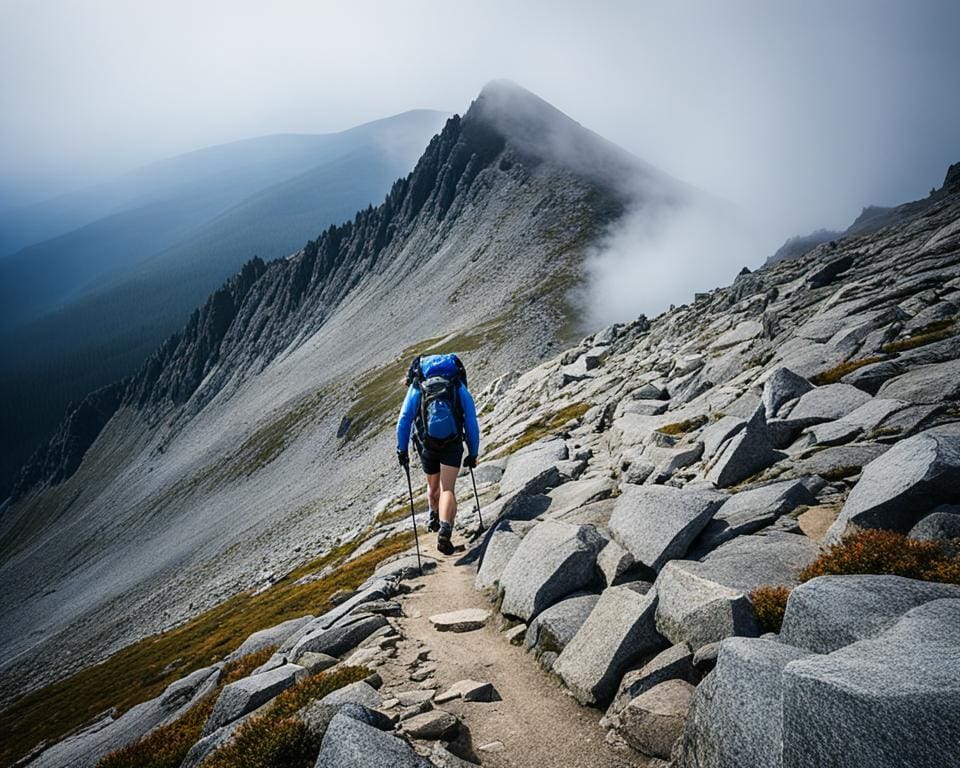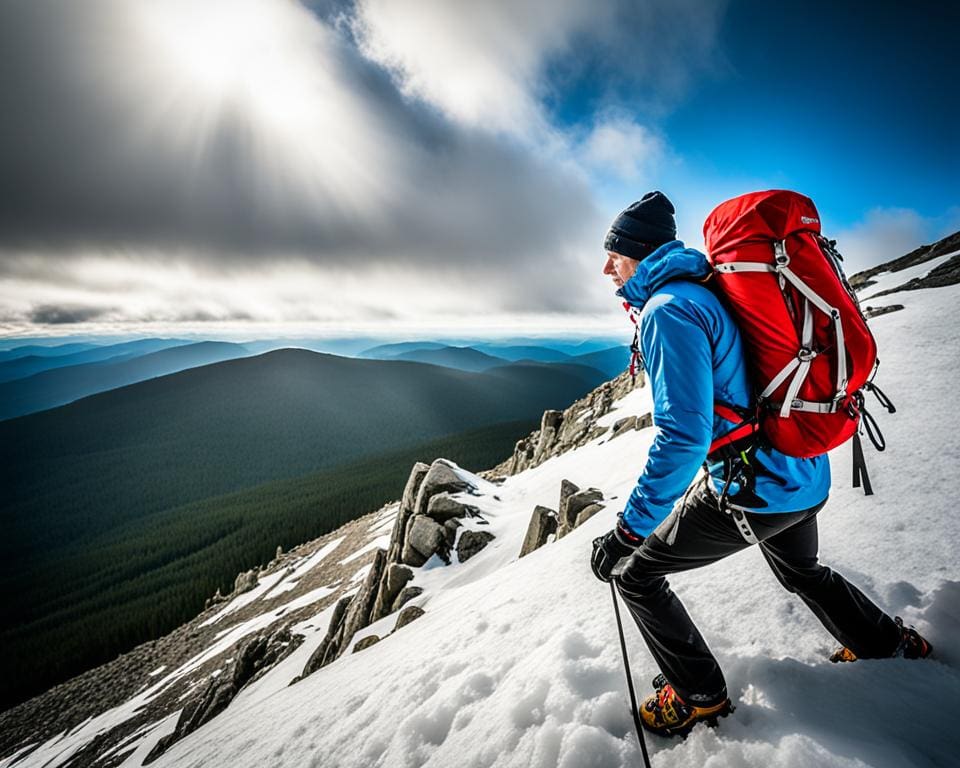Mt. Washington rises to 6,288 feet, the tallest peak in the Northeast. It’s in New Hampshire’s White Mountains. Hikers find it an exciting challenge. The climb usually needs 8-10 hours. It tests your ability to handle tough paths.
It’s known for sudden weather changes and stunning vistas. Mt. Washington climbing tests your body and connects you to nature. With a guide-to-client ratio of 1:4, support is strong. Climbing season lasts from May to October. Climbers should come ready for a hard trip.
Introduction to Mt. Washington
Mount Washington towers at 6,288 feet, making it the tallest peak in New England. It attracts both adventurers and nature enthusiasts. Its significant height and rich history establish it as a prized national landmark.
Overview of Mt. Washington’s Significance
Mount Washington stands as a key feature in the White Mountains. Every year, more than a quarter million people visit. They come to tackle the renowned Mt. Washington Hike. The mountain offers breathtaking views and a chance to see nature’s raw strength. Past the tree line, the landscape opens up into the alpine zone. This showcases the peak’s stunning beauty.
Historical Background
The name ‘Mount Washington’ carries historical depth, originally named “Agiocochook” by Native Americans, meaning a sacred spot. The first climb documented by a European was in 1642 by Darby Field. In 1819, Crawford Path was created. It is the oldest maintained hiking trail in the U.S. This history highlights Mount Washington’s journey from a sacred symbol to a cherished hiking destination. Adventure lovers are drawn to its significant trails.

Mt. Washington: Climbing the Northeast’s Tallest Peak
Planning a trip to Mt. Washington is exciting yet challenging. There are many paths to take, each offering amazing views. Climbers get to challenge themselves against this famous mountain.
Climbing Routes and Access Points
Two famous paths are the Tuckerman Ravine Trail and the Winter Lion Head Route. The Tuckerman Ravine Trail is popular for its beautiful scenery. It draws many hikers each year. The Winter Lion Head Route is tougher but offers an exciting climb in winter.
Weather Challenges
Knowing the weather on Mt. Washington is crucial. Its weather can be severe, with extreme winds and cold. The mountain once had a wind speed of 231 miles per hour. Climbers must be ready for anything.
Necessary Gear and Preparation
Being safe on the mountain means having the right gear. Essential items include:
- Crampons: 10-12 point adjustable models designed for mountaineering
- Ice Axe: Standard tools for navigating icy terrain
- Helmet: A lightweight helmet for protection
Choosing layers for your clothing is important. It keeps you warm and allows movement. Staying hydrated is key, with a recommendation to drink at least 2 liters of water per day. Snacks like trail mix and energy bars keep climbers energized.
Experiencing the Summit and Beyond
Reaching the top of Mount Washington is a journey that’s more than just a climb. It’s an entry into amazing experiences and views. At 6,288 feet high, the peak gives a special look at New Hampshire and further. At the summit, there are chances for adventure and thought, all with incredible Northeastern U.S. scenery.
Activities at the Summit
Adventure waits at the top with various activities. You can explore:
- Guided hikes for all levels, so everyone can enjoy the land.
- Educational exhibits to learn about the mountain’s nature and past.
- Photography opportunities to capture the beautiful views and landscapes seen over five states.
The summit’s tough weather makes visits unforgettable. It’s a chance to connect with nature and enjoy thrilling activities. This creates memories that last a lifetime.
The Mt. Washington Observatory
Since 1932, the Mt. Washington Observatory has been a key center for weather study and learning. It helps in understanding weather and climate. Visitors learn how weather impacts the environment. Tours show the important science happening here. It shows how vital weather monitoring is for hikers and locals. The observatory also teaches about the mount’s heavy weather, adding to the New Hampshire hiking thrill.
Safety and Conservation on Mt. Washington
Exploring the stunning Mt. Washington safely requires knowing about Mt. Washington Climbing Safety. The weather can change fast, making conditions tough. Hikers should always check the weather and follow park rules closely. Every careful step on the trails keeps all adventurers safe.
Conserving the trails is just as crucial. Responsible hiking ensures the beauty of Mt. Washington lasts for future visitors. Staying on marked paths protects the plants and animals, preserving the area’s rich natural life.
Respecting the mountain’s resources enhances every visit. By hiking responsibly and reducing our impact, we can enjoy amazing views that stretch up to 130 miles. Safe hiking practices and caring for the environment make a trip to Mt. Washington unforgettable for adventure seekers.









